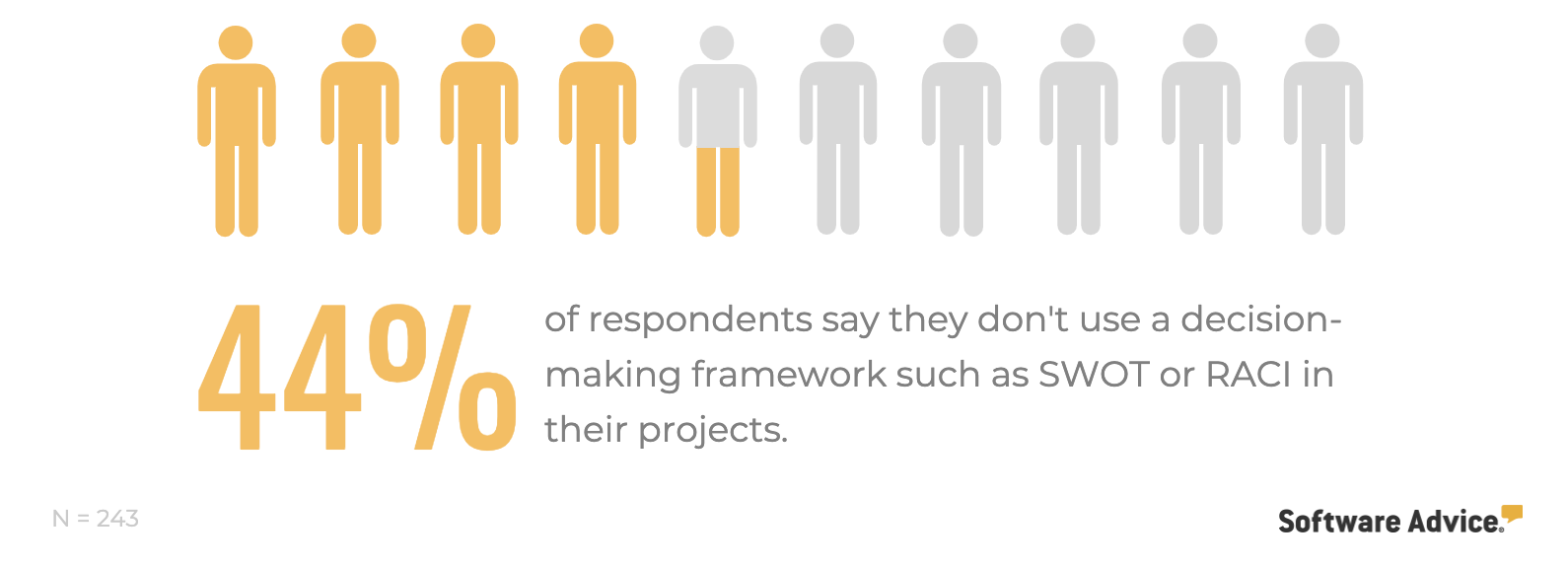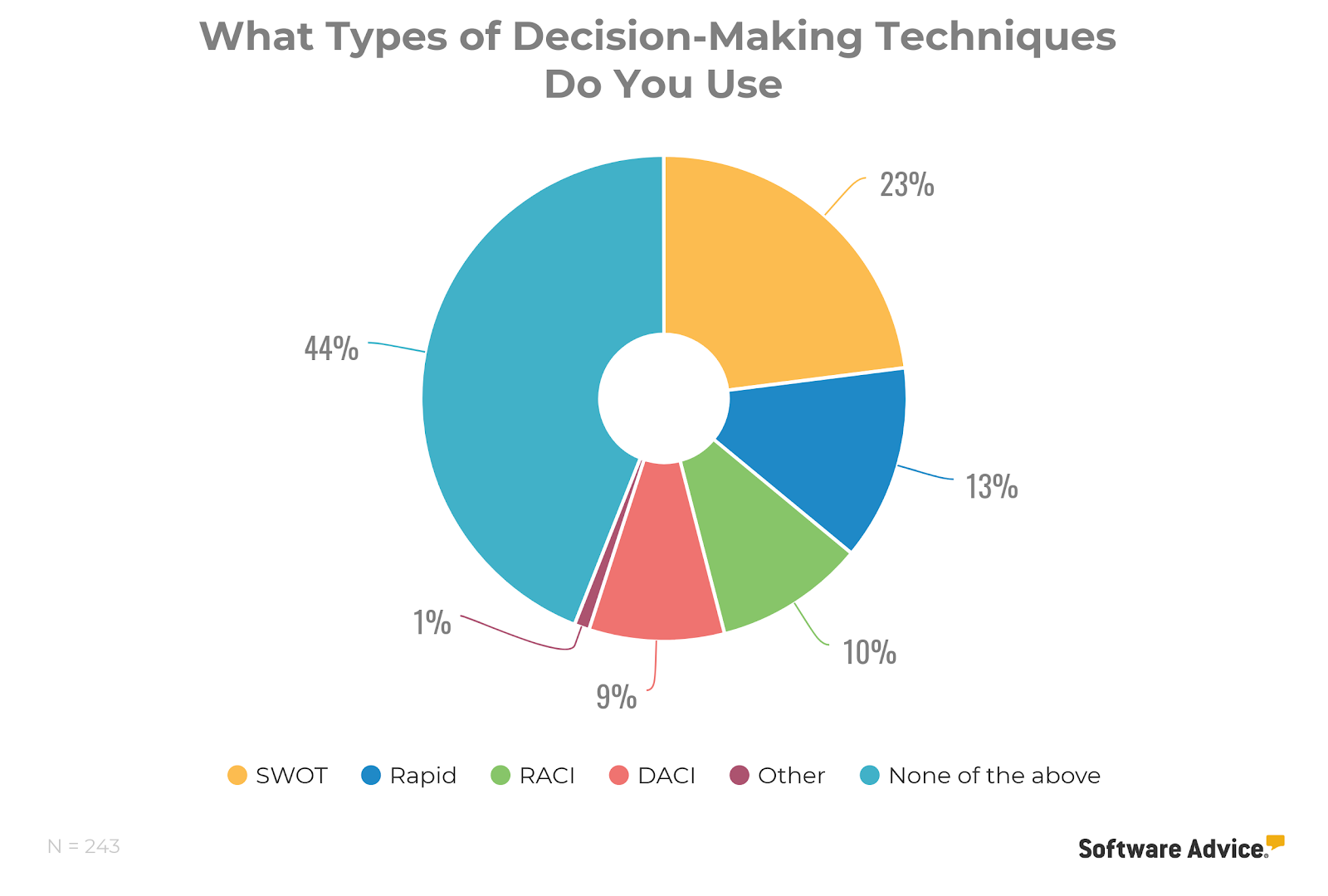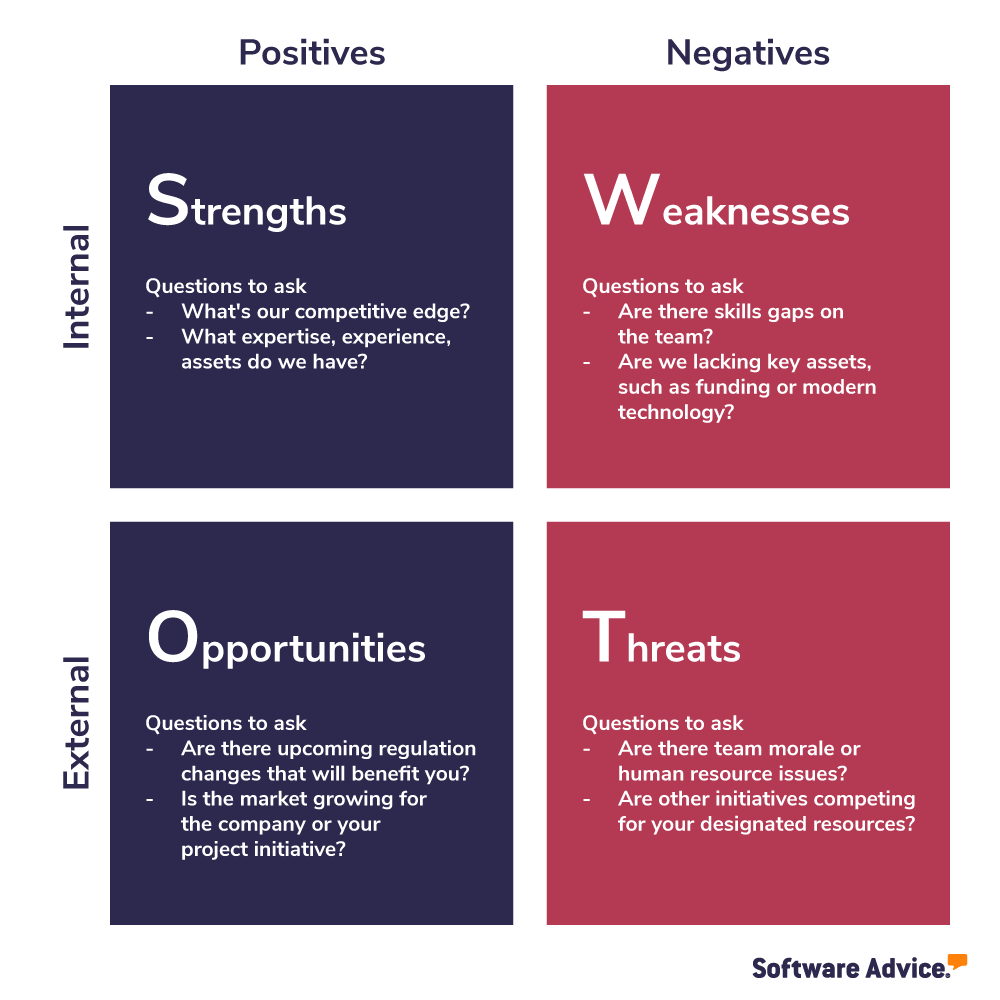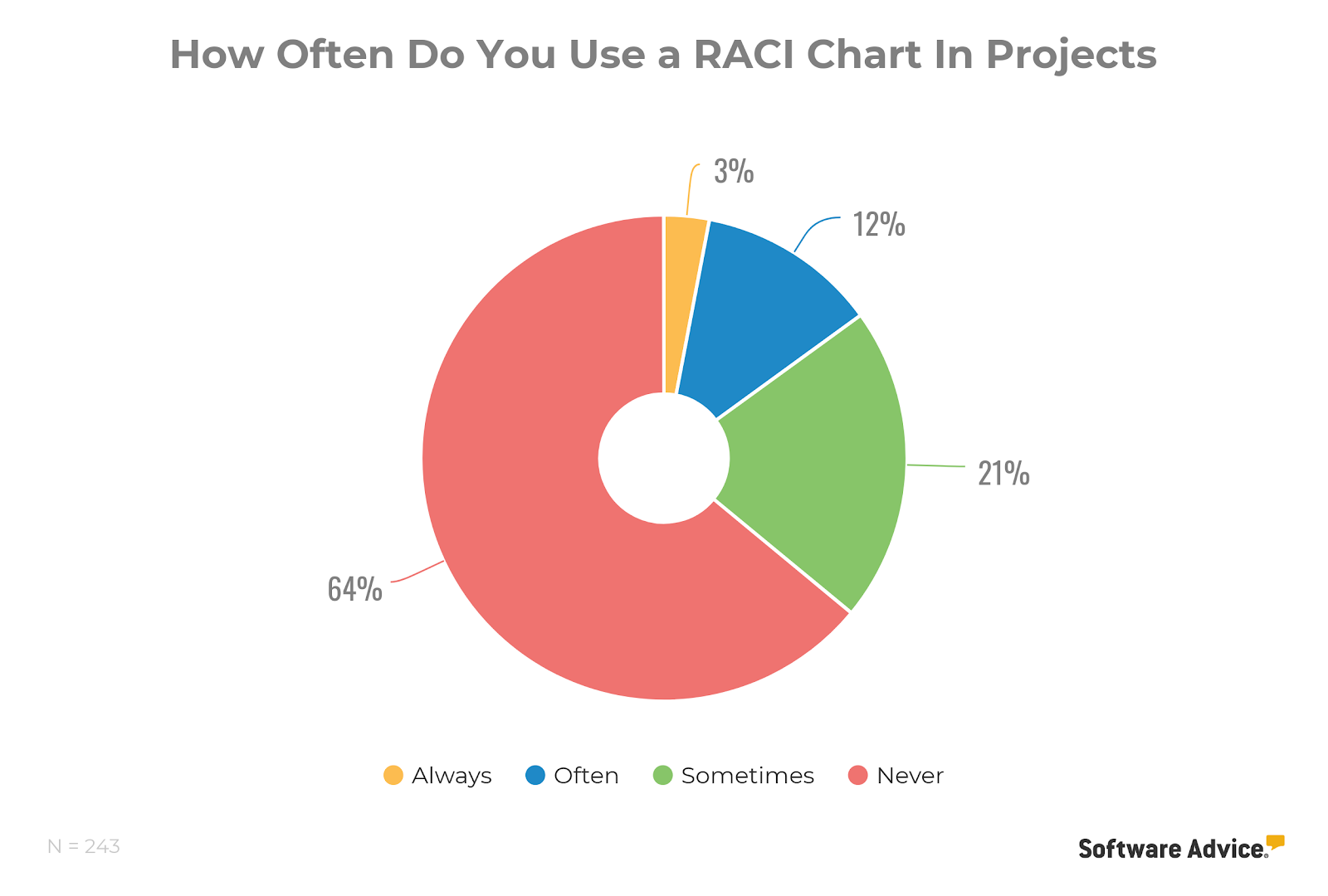Most Popular Decision-Making Frameworks Among Project Managers
Too many business leaders struggle to make good decisions, and it’s possible you’re one of them.
In a survey of 243 project management professionals, we found nearly half don’t use any specific decision-making techniques to find the best solution.


The problem with this lack of approach is it can cause confusion and disengagement when decisions need to be made, or worse—you just spin your wheels and never make a decision. This article can help you:
Understand the most popular decision-making frameworks
Determine which decision-making framework will most likely suit your needs
What is a decision-making framework?
Framework. Methodology. Format. Each of these describe the exercise of defining the problem, identifying stakeholders, gathering the key information, and determining the best solution. A business often will have a preference for one framework over others due to previous success or sometimes just a lack of exposure to other methods.
SWOT is the most popular decision-making framework—should it be?
Twenty-three percent of our respondents say they are using SWOT. But SWOT being the most popular technique comes as a surprise to me. Mainly since it’s excellent at helping define a strategy, but can get confusing if used in the middle of a project and a decision needs to be made.
What is SWOT?
SWOT is an analysis and strategy-creating framework focused on gathering key information in order to make an informed decision. It’s also an acronym for strengths, weaknesses, opportunities, and threats. Key stakeholders typically will gather in a brainstorm-type meeting and complete a four-quadrant SWOT chart.
To get you started, here’s a SWOT chart with the format to use and some questions for each area to get the conversation going.

Weaknesses of SWOT in projects
A SWOT analysis is an excellent framework for developing the business case and scope of a project. But once a project is kicked off it lacks two critical components needed to steer the project.
Lack of assigning roles, such as who is the decision-maker, leads to confusion of authority.
SWOT is effective at identifying and defining goals and strategy, but lacks in giving structure to the execution. Whose on the team, what exactly are they doing, and how it all will work day-to-day aren’t addressed—just the high-level what and why.
Going through the external factors, the opportunities, and threats, won’t help the team when decisions on project execution or how to remove roadblocks are needed. In fact, they can distract from the tactical decision at hand.
SWOT can be used if the project is in dire need of a major course correction or possibly stopping the effort. This analysis can help determine the new scope, but this would be technically a new project and should be managed as such.
The RAPID framework is also popular, but likely overkill for your project
After SWOT, RAPID was the decision framework of choice at 13%. RAPID is excellent for when a high-risk and highly complex decision needs to be made. But it’s not ideal for the smaller decisions that need to be made during a project.
What is RAPID?
RAPID is an acronym for recommend, agree, perform, input, and decide. Each represents the role the people on the project team will play in the specific decision to be made. A single person is designated as the one who makes the decision, so this helps clear confusion on authority, but the RAPID approach can be surprisingly slow even though it sounds like it should be quick.
Check out my in-depth definition of RAPID decision-making framework here. I also give a detailed explanation of how to decide if RAPID or RACI is best for your project.
RACI is the most underrated decision-making framework
RACI comes in third at 10% of respondents saying they use it. But the biggest surprise in the survey came from another question: How often do you use a RACI chart in projects?

Aaahh!!! The real monster! (That’s a vintage cartoon reference for those of you in the know.) This chart is so shocking because nearly 2/3 of respondents never use RACI charts—and this lack could very well be the root cause of frustration and confusion in how decisions are made in the workplace.
What is RACI?
RACI stands for responsible, accountable, consulted, and informed and each represents the role a named person plays. Each major milestone of a project gets its own assignment of roles. One person is named as the accountable party (aka the “decider”) and this is where RACI sets itself apart from RAPID and SWOT.
I’ve written a how to and analysis on RACI charts that I recommend you check out next. But here are some highlights as to why a RACI matrix is what your project is missing.
Every person on the project team is given a specific role. People know what they’re supposed to be doing, their level of authority, and who to go to for needed info just by checking this chart.
The responsibility roles are defined at each major step in the project. This reflects the varying assignment of tasks and levels of authority that occur across the lifecycle.
The chart is readily available for reference as needed by anyone on the team. There’s nothing secret on it, such as the weaknesses on the SWOT chart that may not be appropriate for all team members to see.
Well there you have it! Project management business professionals are out there struggling with effective decision making, and it’s likely you’re one of them.
I hope this article helped shed light on how a SWOT analysis or the RAPID technique may be negatively impacting the decision-making process in your projects. And maybe now you’re a major RACI fan like me.
I’d love to know your thoughts! Whether on SWOT, RACI, project management software, or project best practices—tweet me @AnalystOlivia.